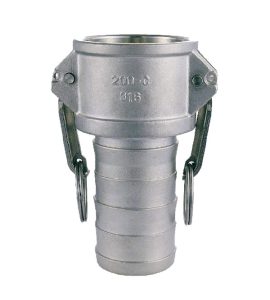Camlock couplings, also known as cam and groove fittings, have played an essential role in fluid transfer systems for decades. Their simple yet effective design, combining ease of use with secure connections, has made them indispensable in various industries. From their humble beginnings to their widespread use today, the history of camlock couplings is a testament to the evolution of industrial engineering and technology.
Early Beginnings: The Quest for Efficient Couplings
The origins of camlock couplings can be traced back to the mid-20th century when industries began to require more efficient and reliable methods of transferring liquids, gases, and powders. Traditional coupling methods, such as screw-on fittings, were slow and often prone to leaks. As industries such as agriculture, chemical processing, and water treatment expanded, the need for faster, more secure, and more durable connections became urgent.
The solution came from the development of a coupling system that utilized a cam lever mechanism. This design allowed users to quickly and securely connect hoses or pipes without the need for threading or heavy manual effort. The first camlock couplings were made from durable metals such as aluminum and stainless steel, which provided the necessary strength and corrosion resistance for a wide range of industrial applications.
Design and Patent: The Birth of the Camlock Coupling
The breakthrough came in the 1950s when an American engineer named John R. “Jack” Fitzgerald patented the camlock coupling design. Fitzgerald recognized that the traditional methods of securing fittings were inefficient and often resulted in accidents or leakage. His design incorporated a series of cams, or levers, which locked into place over a groove on the coupling. This simple yet effective mechanism allowed the coupling to be easily connected and disconnected, even under high-pressure conditions.
This innovation quickly gained traction in industries that required frequent assembly and disassembly of hose connections, particularly in fields like firefighting, agriculture, and chemical handling. The ability to easily connect hoses and pipelines saved valuable time, improved safety, and reduced the likelihood of leaks during fluid transfer.
Growth and Widespread Adoption
Following Fitzgerald’s patent, the camlock coupling rapidly gained popularity throughout the United States and beyond. The versatility and simplicity of the design allowed it to be used in a wide range of industries, including fuel transfer, construction, mining, and food and beverage manufacturing. The ability to handle various substances—from water to chemicals to petroleum—further boosted its widespread adoption.
As demand for camlock couplings grew, manufacturers began to produce fittings in a variety of sizes and materials, making them suitable for different applications. Over the years, camlock couplings were manufactured from materials such as brass, stainless steel, aluminum, and even plastic, depending on the specific needs of the industry. The introduction of materials like stainless steel and polypropylene also addressed concerns regarding corrosion and chemical compatibility.
Innovations in Materials and Design
The next significant step in the evolution of camlock couplings came with advancements in materials. The development of corrosion-resistant alloys and composite materials allowed camlock couplings to be used in more demanding environments, including those where exposure to harsh chemicals or extreme temperatures was common. This increased the coupling’s application range, making it suitable for industries like oil and gas, water treatment, and pharmaceuticals.
Moreover, camlock couplings began to be designed with a range of safety features, such as locking pins, vibration resistance, and quick-release mechanisms, further enhancing their safety and usability. As industries continued to grow and diversify, the demand for more specialized camlock fittings emerged. This led to the development of additional features, including sanitary camlocks for food-grade applications, specialized gaskets for sealing, and custom configurations for unique industrial needs.
Global Expansion and Modern-Day Use
In the latter half of the 20th century, as globalization increased and international trade expanded, the use of camlock couplings became more prevalent worldwide. Manufacturers in Europe, Asia, and other regions began producing their versions of the camlock coupling, leading to increased competition and innovation in the industry.
Today, camlock couplings are used across virtually every industry where fluid transfer is required. From firefighting equipment to pharmaceutical production, camlock couplings remain a trusted choice for secure, efficient connections. Modern-day camlock couplings are available in a vast range of sizes, materials, and configurations, ensuring that they meet the specific demands of the most challenging applications.
